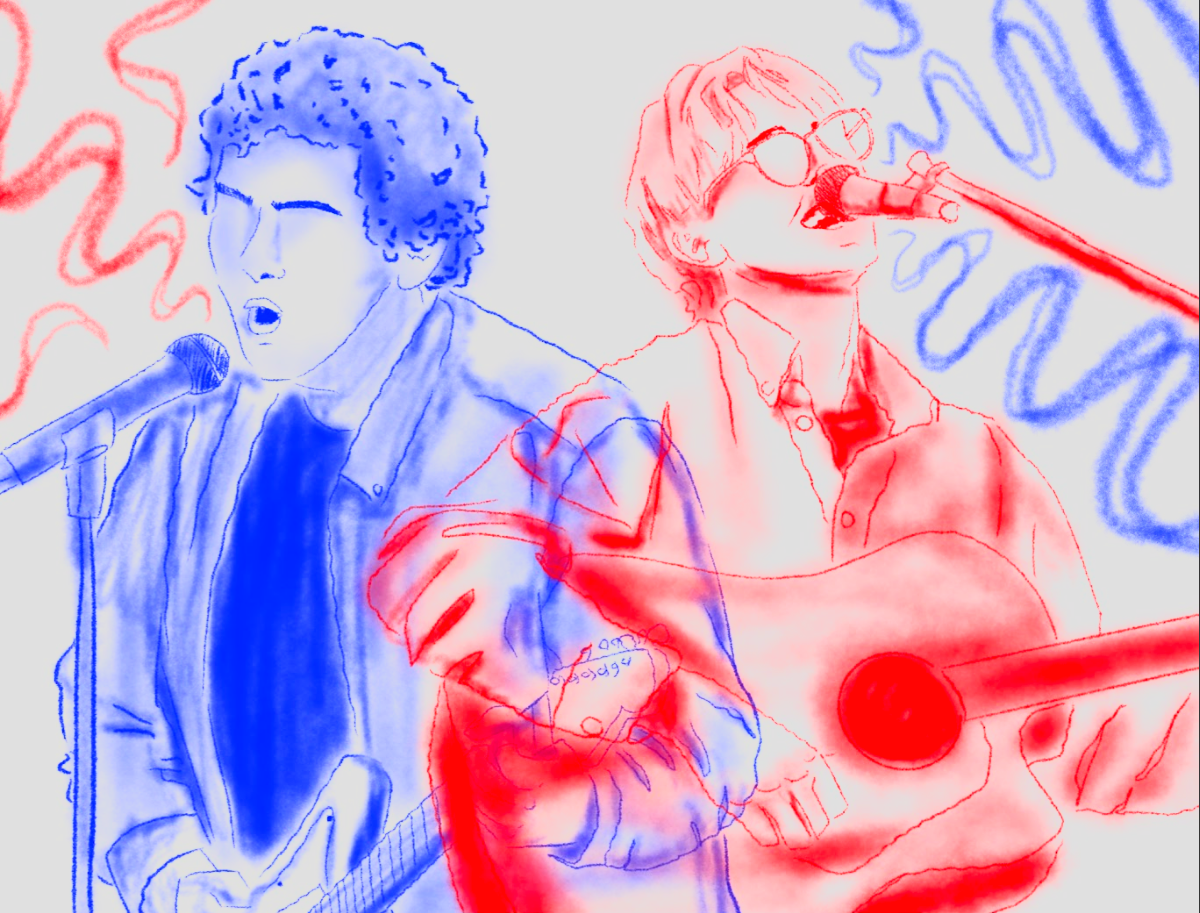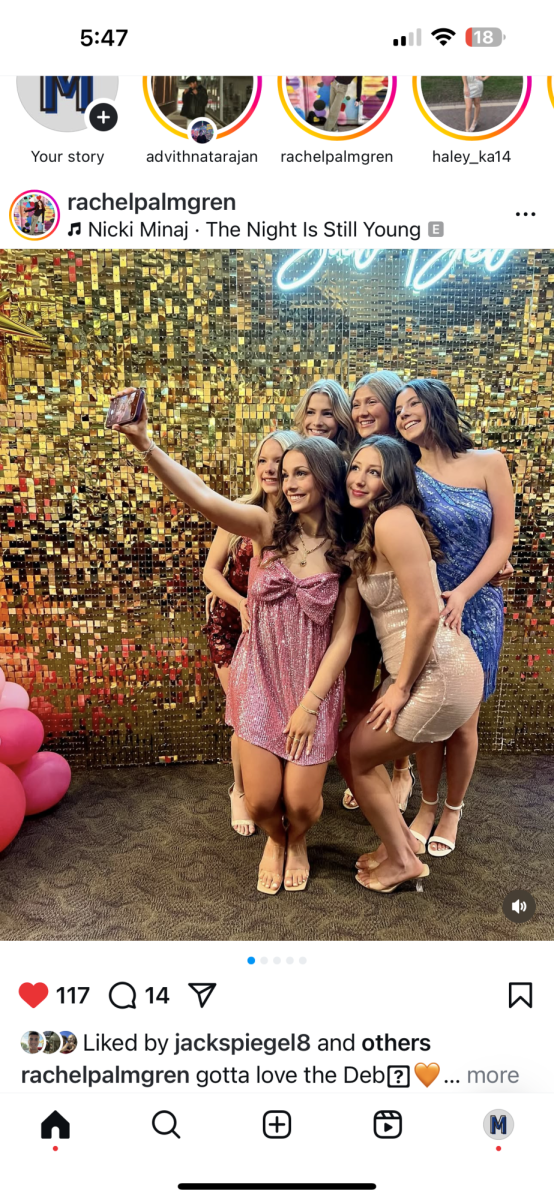Frank Prentup: the history of our Indian mascot
November 10, 2017
Manhattan High west campus, an intimidating place to underclassman, a mundane aspect of life for most everyone else. It seems usual, like most other high schools — clusters of students litter the front steps as you walk in the door, office phones ring, the commons lay awake in the buzz of students’ chatter. Now stop in front of the stairs and there it is — staring at you in an unnoticeable, intimidating, yet wise gaze — the Indian, MHS’ mascot, frozen in its painted image that has adorned the wall of MHS for years.
There has been much discussion surrounding the MHS mascot for years. Last year, when the mascot frenzy dove into what many would say were its most intense and heated moments, students and the community alike came together in discussion of our mascot and the history behind it, as well as the legacy a former MHS coach left for generations of students.
During Native American Heritage month, November, it becomes time to reflect on and appreciate the story surrounding MHS’ mascot for the past 77 years.
According to usd383.org, the Indian mascot originates all the way back to the 1940s. MHS students at the time selected the Indian to honor athletic coach Frank Prentup, who was of Iroquois descent.
According to mhsalumniassociation.org, “the MHS Football coach, Frank Prentup, was of Native American ancestry and he is believed to have donated the first Indian headdress to the school.”
In the Dec. 11, 1992 edition of The Mentor, Aaron Otto, who at the time was the opinions page editor, wrote “According to Ralph Roger, an MHS teacher during he early ‘40s, who later became assistant principal, the name Indians was heavily favored because the students wanted to honor their very successful football coach, Frank Prentup, who was part Native American.”
In an interview to The Mercury, Duke Prentup, Frank Prentup’s son, said Prentup was often referred to as “Chief” by students, which inspired the image of the MHS mascot drawn by former MHS art teacher Brent Yancey — also of Native American descent. It supposedly portrays a portrait of Prentup in his Native American dress. The official image is painted above the main stairs leading to the commons at West campus and can be seen from the front doors when one walks in.
According to Duke, his father “enjoyed [the mascot] very much… he was proud of it.”
Prentup passed away in 1992 and was inducted into University of Colorado’s Athletics’ Hall of Fame in 2015.
While the mascot was, and is, a symbol of honor for many, it was once a symbol of initiation at MHS. According to a story in The Mentor in 1972, a mosaic of the mascot — the one that now presides over the MHS hall of fame — once graced the floors of the north gym lobby, and was, by “tradition,” a part of an initiation for sophomores in which upperclassmen threw unsuspecting underclassman onto the mosaic and made them “shine” the mascot. While the mosaic has since been moved to a wall, and the tradition abolished, the Indian probably has many scars of flailing sophomore bodies being used as cleaning tools upon it’s honored face.
The Indian may have stood for a ridiculous practice exercised by upperclassmen, but currently, the mascot stands for so much more. From last year’s battle over him, to the battles fought in the way past, to the ones yet to come, time and time again the student body has shown overwhelming fight and love for the mascot. This is a part of it’s history as much as it’s facts and origin.
The Indian mascot of MHS is surrounded with history, history that has lived on for 77 years. It holds within its wise stare the history of a honored coach, the surprise of victimized sophomores and the love of current MHS students.




Heather Williams • Jul 31, 2021 at 3:20 pm
I’m a 1985 graduate of MHS, and I think it’s way past time that the School Board retired this logo. I am skeptical of the Prentup claims to being Iriquois, and even if he were a tribal member (which I don’t think he was), that doesn’t justify the ongoing use of a demeaning mascot. Native leadership across the country has been unequivocal in their condemnation of Indian mascots for decades now. There are ll kinds of things that the school district has changed to bring our schools into the 21st century– buildings, curricula, activities, etc. Why is this artifact of a casual racist past considered untouchable?
Sally Cameron • Sep 17, 2022 at 10:52 am
While I agree that the mascot needs to be changed, I am appalled by your questioning of Frank’s ancestry. My dad was friends with him for over 40 years, and knew both he, and his family. Frank’s father was a fill blooded member of the Tuscarora, which is the sixth tribe of the Iroquois Federation. They still have family members that live on the reservation on the south shore of Lake Ontario.
In the future it would be wise to know of what you write.
Ralph Fontenot • Oct 9, 2020 at 9:27 pm
Ms Comas,
I’ve had questions, maybe you can answer them. What tribe was Mr Prentup from? what was his record at MHS? Did the Potawatomi Nation give their blessing for the use of the image? I’ve had discussions with many people about cultural acquisition in regards to it’s use, so, just looking for facts. anything would help
Meredith Comas • Jul 18, 2020 at 9:24 pm
Hi; I’m the former editor of The Mentor and author of this story, Meredith! While obviously you can continue sharing this story for informational purposes, I just wanted to let you know that since 2017, I have received new information and education, and no longer stand by the mascot’s representation in this story. There are some great articles on MHSMentor.com that reflect the mascot’s effects more accurately; I’d be happy to go through and point them out!